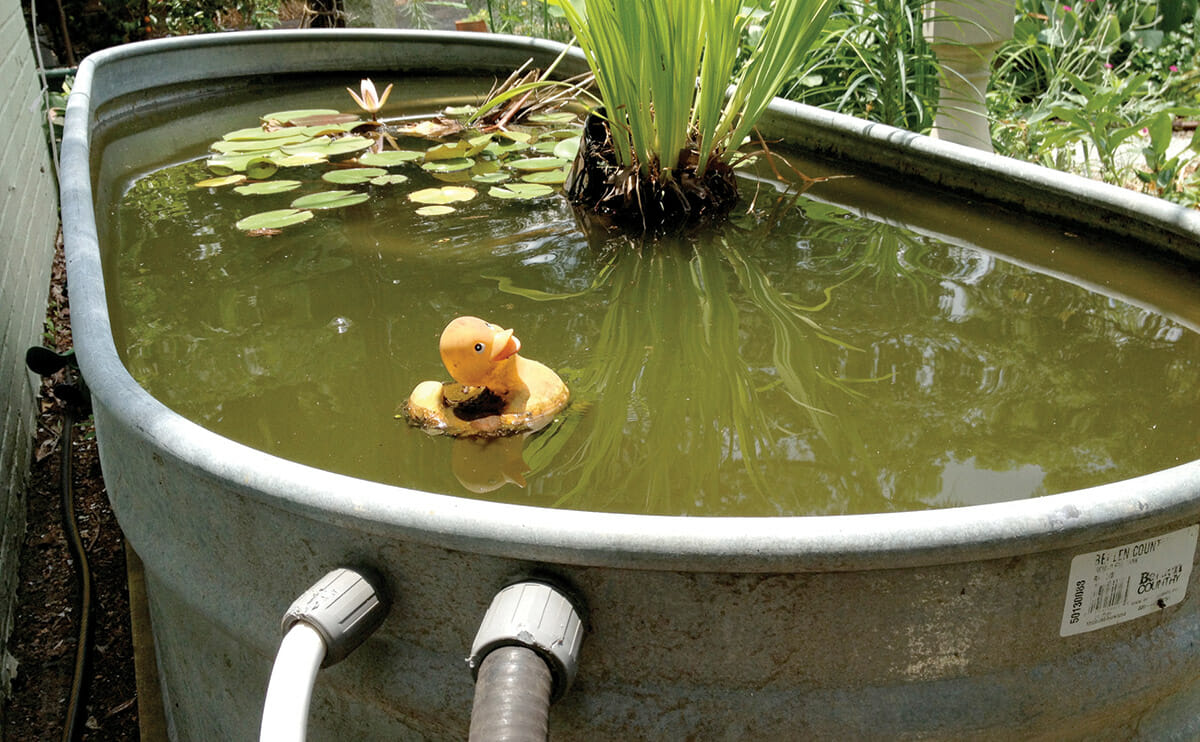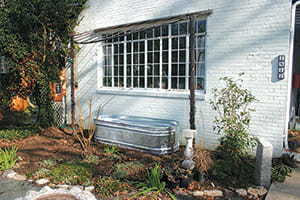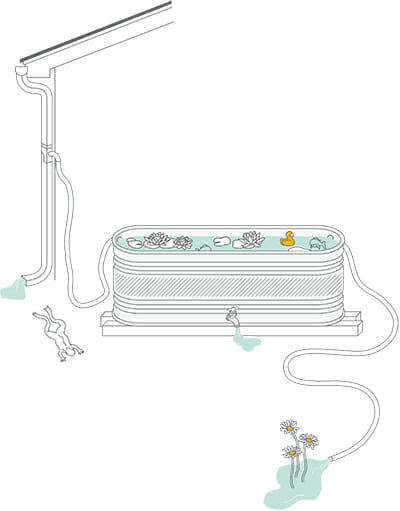Use a trough to recycle rain water for food production and your very own water garden.

[mf_h5 align=”left” transform=”uppercase”]1. Make it level.[/mf_h5]
The grey layer of zinc on the trough means it’s galvanized, so it resists rust. But it’s not rustproof. Acids in soil dissolve the zinc; then the steel rusts and leaks. So make sure to raise the trough up at least five inches on equally spaced cinder blocks, bricks or pressure-treated wood – anything that’s rock solid and rot-resistant works. You might need a mix of materials to get the trough level.
[mf_h5 align=”left” transform=”uppercase”]2. Get connected.[/mf_h5]
Put the trough beneath a downspout that siphons rainwater off your roof. If that’s not practical, a downspout diverter (basically, a hose) can funnel water to the trough. You’ll also want to install an overflow hose that diverts excess water from the trough to a safe space in the yard to avoid flooding. Attach both to the trough with a drill-mounted hole saw and watertight connectors (found at an electrical supply store). Replace the plug at the base of the trough with a brass spigot. But first, seal the spigot by wrapping the threads with Teflon tape. A soaker hose (which slowly releases water over a long period) screwed to this spigot will water your thirsty garden overnight. Or plunge watering cans into the trough to water potted plants and seedlings.

A horse trough is attractive and holds more water than traditional rain catchment containers; Not to mention you can grow a lovely water garden (with or without a ducky). / Courtesy Frank Hyman
[mf_h5 align=”left” transform=”uppercase”]3. Fresh food and flowers.[/mf_h5]
Five-gallon buckets set in the trough can each hold a water lily: Their flowers, seeds and roots are edible. The buckets will act as reservoirs to keep the plants’ roots wet when you draw down the trough. Use the bucket handle to lift plants every summer to divide and harvest half the roots or share with friends.
[mf_h5 align=”left” transform=”uppercase”]4. Good critters.[/mf_h5]
One downside of keeping a large trough of water on your property is that mosquitoes and algae love to grow in it. The solution is both simple and fun to watch: Goldfish live well off mosquito larvae and algae. You’ll probably be able to keep them in the trough if you have a metal roof, but not if you have asphalt shingles – they deposit petroleum poisons that kill fish. If this is the case, get some Mosquito Dunks, cheap pellets that dissolve in water and contain bacteria that kill only mosquitoes.
[mf_h5 align=”left” transform=”uppercase”]5. One more thing.[/mf_h5]
Since sunlight is plant food, our trough sits in front of the house soaking up afternoon rays. That sunlight ricochets off the water surface, through our picture window and onto the living room ceiling. At cocktail hour we watch the rippling play of light on the ceiling.

great info!